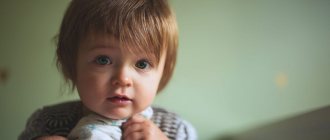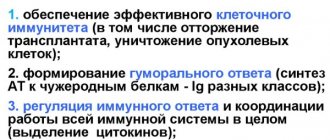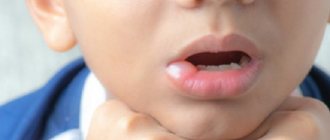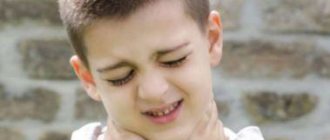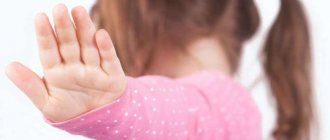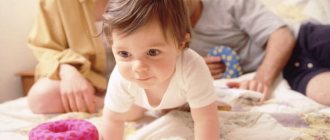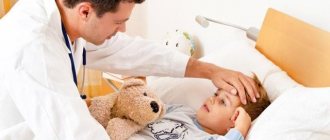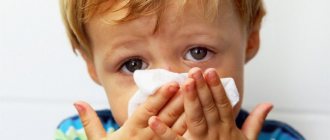Diarrhea in a baby can occur for many reasons. The main thing is to recognize the symptoms in time and begin treatment. After all, sometimes behind harmless loose stools lie serious disturbances in the functioning of internal organs. Perhaps dangerous viruses and bacteria have entered the body.
Diarrhea is characterized by loose stools up to several times a day. Color, smell, structure are important when making a diagnosis. Diarrhea, in which, for example, streaks of blood can be traced, should be treated.
Diarrhea in newborns
In the first days after the baby is born, the stool is dark green in color. It is called meconium. There is no need to treat this condition. You should be wary of its absence, as this may be the cause of a serious illness. Subsequently (up to about a month), the color of the child’s stool may be yellow-green or brown. During the first year, the stool becomes yellow.
Diarrhea in infants is a very common occurrence. When a baby is born, its internal organs are not yet fully formed. Their final maturation occurs during the first year of life. Therefore, during the first month of life, problems with stool may occur. The intestines, when eating food, have not fully learned to process it correctly. As a result, the baby develops diarrhea. The main reasons are non-compliance with the rules of breastfeeding. In this case, the child looks healthy and calm.
Often, already in the maternity hospital, pediatricians advise giving newborns bifidumbacterin, a medicine based on living bifidobacteria that stabilizes intestinal function. It is recommended to give Bifidumbacterin to infants after taking antibiotics.
Incorrect attachment to the breast or frequent changing of one breast to another also causes diarrhea . As a result, the baby receives foremilk, which contains only lactose. Fats are found in the deeper milk of the breast and serve as the baby's main food. This results in loose, foamy green stools. In this case, treatment consists of establishing a diet.
Taking live bacteria will help you cope with the disease faster. Bifidumbacterin is a safe drug even for newborns. Treatment should begin after consultation with a doctor.
Causes of diarrhea in children
Different causes of diarrhea in children are determined depending on what type of diarrhea is diagnosed. The presence of infectious diarrhea is noted with salmonellosis , dysentery , food poisoning , viral diseases , etc. Very often, modern children are diagnosed with viral diarrhea . Its main causes in a child are rotavirus . Mostly, diarrhea caused by rotaviruses affects children under two years of age. As a rule, these are sporadic cases, but sometimes epidemics of rotavirus infection occur. For rotavirus infection, the incubation period can last several days. It manifests itself acutely - vomiting, general symptoms of malaise and diarrhea. With viral gastroenteritis, there is usually no pain in the abdomen. Diarrhea is watery, and the fluid that the child loses during such an illness contains a lot of salts. If in an adult viral diarrhea can last up to three days, then in children the disease sometimes lasts up to six days. During the treatment process, it is very important to ensure that the fluid that the body has lost is replaced, since severe dehydration can be life-threatening. Therefore, the child is recommended to drink drinks containing salt and glucose. The use of antibiotics to treat children with watery diarrhea does not affect the duration of the disease.
Alimentary childhood diarrhea manifests itself as a result of a long period of malnutrition, with a monotonous diet, in case of allergies to food or medications.
The cause of dyspeptic diarrhea is a disruption in the digestion of food due to secretory insufficiency of the liver, stomach, and pancreas. Also, dyspeptic diarrhea can result from insufficient production of a number of enzymes by the small intestine. Diarrhea in an infant may develop due to lactase deficiency . In this case, the baby’s well-being becomes worse some time after feeding with milk (for infants - after feeding, for older children - after taking whole milk or dairy products). With sugar deficiency, the same thing is observed if the child has eaten food with sugar.
Toxic diarrhea in a child manifests itself as a consequence of kidney failure, as well as when the body is poisoned with arsenic or mercury. Drug-induced diarrhea develops after taking certain medications. Most often in children this occurs under the influence of antibiotics, which can provoke the development of dysbiosis .
Neurogenic diarrhea is a consequence of disturbances in the regulation of intestinal motor activity by the nervous system. Thus, diarrhea in an infant can develop due to strong excitement and fear.
In children over one year of age, diarrhea can also be caused by irritable bowel syndrome, as well as a number of chronic gastrointestinal diseases.
Causes of loose stools in infants
Diarrhea in an infant can occur for various reasons:
- First complementary foods. If they are introduced prematurely into the baby’s diet or products have a laxative effect (juices, fruits), fermentation processes occur in the intestines. After their cancellation, the stool improves.
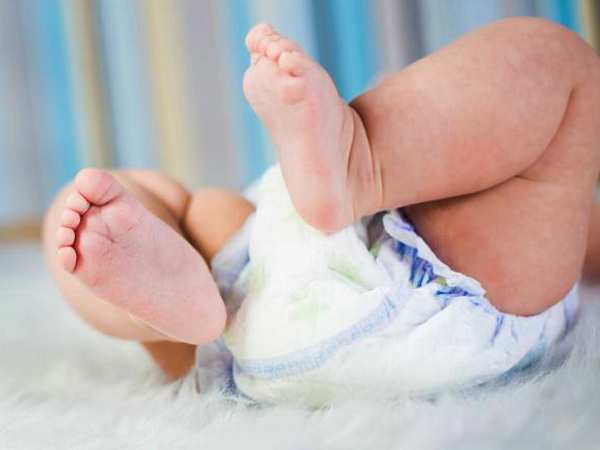
- A sharp transition from breast milk to formula feeding.
- Failure to comply with the rules for preparing mixtures. Make the mixture strictly according to the instructions.
- Intestinal infections can enter a child’s body through dishes and unwashed hands. In addition, a viral intestinal infection is isolated. In any of these cases, in addition to diarrhea with mucus, abdominal pain, vomiting, and fever are observed. Blood streaks may appear in the stool. Children in the first month of life experience these symptoms especially hard.
- The most difficult thing to treat is infectious diarrhea. Using tests, an infection is determined, and only a doctor can prescribe treatment (rotovirus, parasites, bacteria, fungi). Liquid green stools and vomiting are observed. If it is a staphylococcal infection, then the stool will be foamy.
- Perhaps the child has a pathology of the digestive system (intestinal obstruction, peritonitis, appendicitis). In this case, treatment is accompanied by surgical intervention - in no case should you do anything yourself.
- Diarrhea can accompany teething, colds, and genitourinary infections. The stool is loose and profuse. If symptoms of another infection are observed, then the stool becomes mucus, foam, and blood clots are noticeable in it.
- Dysbacteriosis. It is characterized not only by the appearance of loose stools. Feces often contain mucus and foam, and there may be spots of blood. The color may have a green tint.
- Inflammation of the small intestine. The diarrhea is severe, with mucus and foam. Blood streaks may appear.
- Taking antibiotics.
In any of these cases, it will not be superfluous to take bifidumbacterin, which will help fight stool disorders. Especially if the child of the first year of life looks sick and tired.
Prevention of diarrhea in children
To prevent the occurrence of such an unpleasant phenomenon, it is very important to observe all the rules of personal hygiene from childhood and be sure to teach your child to do this. A particularly important point is washing your hands before eating and after walking. All products must be thoroughly washed (vegetables, fruits) and processed thermally (meat, milk, eggs, fish). Water that is used for food must be clean, or better yet, boiled. It is also worth ensuring that the child’s diet is as varied as possible and, if possible, natural. The right approach to lifestyle, hardening, and activity will help strengthen the body's defenses.
Dehydration due to diarrhea
The appearance of loose stools should alert parents. If it is not stopped in time, dehydration may occur when the balance of salts (electrolytes) and water in the body is disturbed. The liver and intestines take part in regulating this balance. As soon as their normal functioning is disrupted, a lack of fluid and salt occurs. The whole body begins to suffer. The situation may worsen due to a combination of loose stools with vomiting and the appearance of streaks of blood in the stool.

The main signs of dehydration are easy to identify.
- The child is experiencing weight loss.
- The child looks lethargic and constantly asks to be held.
- Urination decreases. In this case, the urine becomes dark in color.
- In infants, the fontanelle sinks.
- The surface of the skin becomes dry.
- There is dry mouth. There is no drooling, the child cries without tears.
When to see a doctor
If a child has diarrhea, his condition should be monitored. You should consult a doctor in any case if the child is under six months old.
- Stool with mucus and streaks of blood.
- A cold or viral disease that is accompanied by fever.
- Taking certain medications. Diarrhea appears especially often after taking antibiotics.
- The stool is frequent, often foamy, and turns green.
- Stomach ache.

General information
Diarrhea is the passage of stool that has a liquid consistency and occurs more than twice a day.
The reason for this phenomenon is the passage of the contents of the human intestine too quickly due to the fact that its peristalsis is disrupted, or the absorption of water in the large intestine is impaired and the intestinal wall secretes a lot of inflammatory secretion. Most often, diarrhea in a baby is a sign of diseases of the small or large intestine. However, doctors classify diarrhea into several different types depending on the causes of its origin: infectious , nutritional , dyspeptic , toxic , drug-induced and neurogenic . It is impossible to ignore frequent manifestations of diarrhea in a child. Diarrhea is especially dangerous in an infant, as well as in a child under three years of age.
How to get rid of the problem
- First you need to accurately determine the cause of loose stools.
- Signs of dehydration should be recognized.
- Stop all complementary foods. Establish breastfeeding. Try changing the mixture.
- After the first symptoms of diarrhea appear, begin measures to prevent dehydration. Make an electrolyte solution, which is available at the pharmacy without a prescription. The dosage should be calculated carefully. Some preparations containing electrolytes include rice syrup - this reduces the amount of stool.
- If the child is breastfed, then the mother should exclude laxative products from her diet for the entire period of the disease. Once the stool becomes solid, you can gradually introduce your usual foods.
After taking antibiotics, almost all children under one year of age show signs of intestinal microflora disturbance. In this case, the medicine bifidumbacterin is prescribed.
Bifidumbacterin will help cope not only with stomach and intestinal disorders after taking antibiotics, but also with anemia and allergies. It is recommended to give Bifidumbacterin to babies to drink during the transition from breastfeeding to formula, as well as during the introduction of complementary foods.
The child’s intestines take a long time to recover, and diarrhea will also take a long time. Recovery is indicated by a decrease in the frequency of stools, and the consistency, which should become denser every day.
Treatment of diarrhea in infants
Before the doctor arrives, you can reduce pain and the risk of dehydration yourself.
- Water should be given. You can prepare chamomile infusion or rice infusion for babies. They have a fixing property.
- You should not give your child any medications. And especially not to take the advice of other mothers. If diarrhea was caused by taking antibiotics, then exclude them.
- Monitor the child’s temperature and skin characteristics: presence of rash, pallor, dryness. Monitor the composition of stool, namely the presence of blood in it.
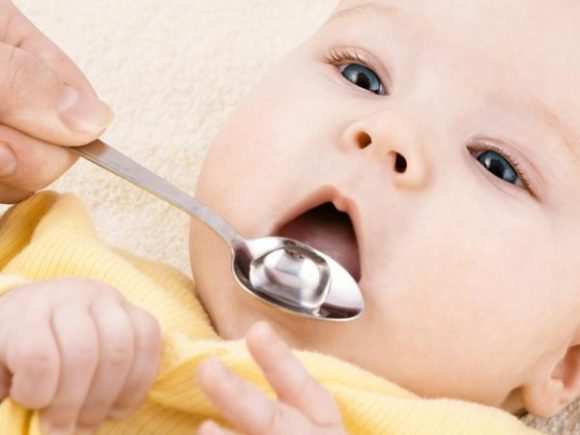
Your doctor may prescribe the following treatment.
- Taking an electrolyte solution.
- If the cause is dysbacteriosis or infection, then antibiotics cannot be avoided.
- Bifidumbacterin. It is able to improve intestinal function. The drug should be dissolved in breast milk or formula. Give on an empty stomach (30 minutes before meals).
- Bowel-absorbing drugs.
The health of a child up to one year old depends entirely on adults. By identifying the first signs of disruption in the functioning of the baby’s digestive systems, you can provide timely assistance and not cause even more harm. By strictly following the doctor's recommendations, you can quickly and easily get rid of the disease.
Diagnostics
When diarrhea occurs in a child, the doctor must first determine the cause of its occurrence. If the baby’s condition is acute, that is, the child has a fever and diarrhea, it is necessary to initially get rid of the acute symptoms. The local pediatrician will tell parents what to do. After this, in order to clarify the diagnosis, it is necessary to conduct an examination of the baby’s stool for the presence of pathogenic flora, helminths, and Giardia cysts. It is especially important to immediately conduct such studies for young children, since acute diarrhea in a child under one year of age causes more rapid dehydration of the body. But for babies after a year with severe symptoms of diarrhea, stool examination is also mandatory.
With diarrhea, changes in the blood picture are often present. Therefore, despite the child’s age, a laboratory blood test should be performed - this is relevant both at one month and at 6 years. So, in certain conditions, the baby may experience anemia, changes in the white blood cell , and an increase in the content of eosinophils .
so-called “ travelers' diarrhea ” if a child of 1 or 2 years old suddenly changes his place of residence. This condition also occurs in older children during long-distance travel. This condition goes away on its own after 1-2 weeks, when the baby adapts to new conditions. But parents should always remember that the child could become infected with parasites at any time. Therefore, research must be carried out. Often, children who are 1 year of age or older are prescribed a repeat stool test after a certain period of time.
In the diagnostic process, an important indicator for the doctor is also the rate of movement of carbolene through the intestines. To do this, a child 1.5 years and older needs to take K arbolen . With severe diarrhea, black stool may appear after 2 hours, whereas normally it takes about 26 hours.

